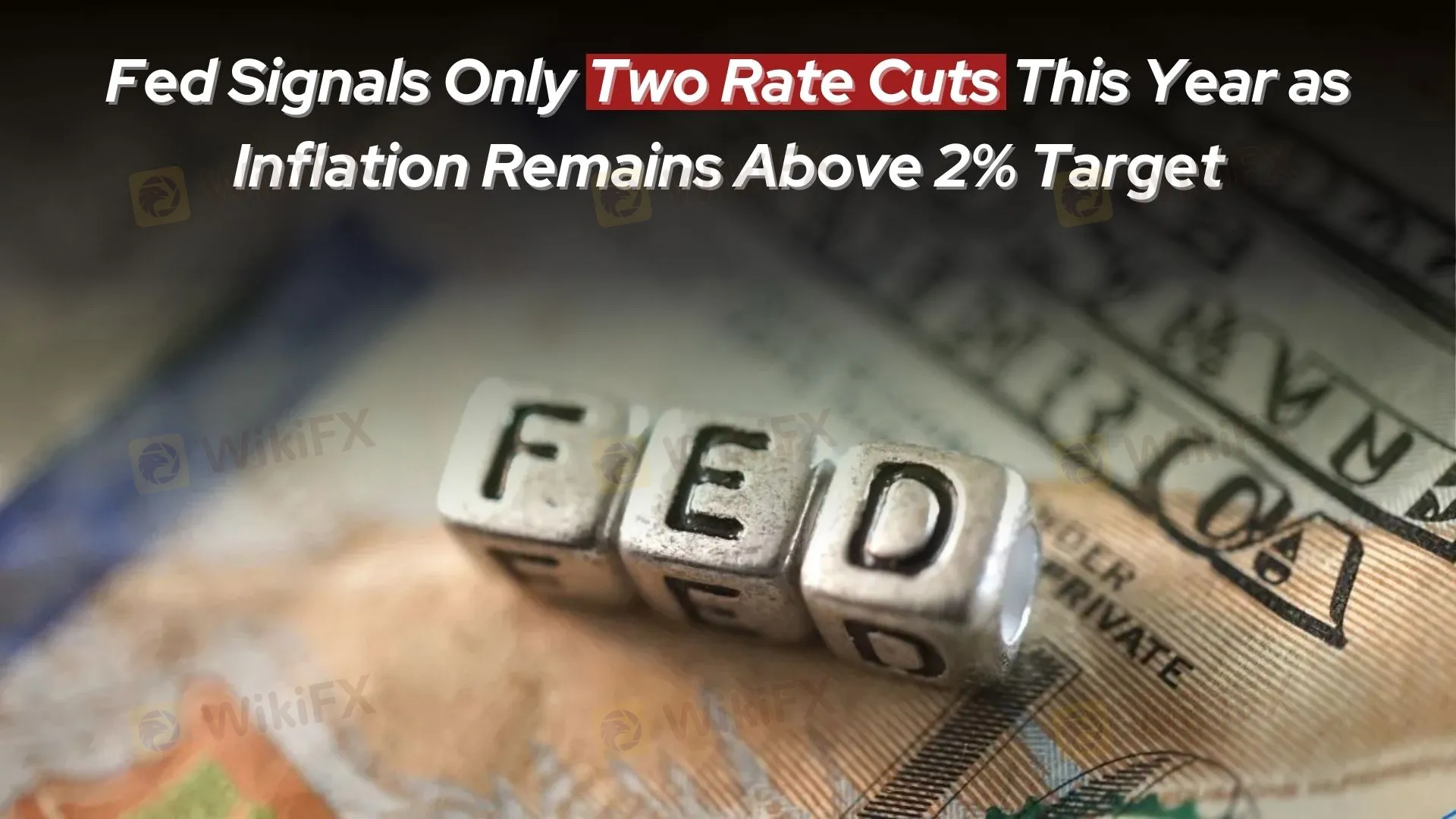Fed Signals Only Two Rate Cuts This Year as Inflation Remains Above 2% Target
Abstract:The Federal Reserve prioritizes inflation control and economic stability, signaling limited rate cuts amid persistent price pressures.

Recently, statements from Federal Reserve officials have reignited discussions about the outlook for monetary policy. With U.S. inflation still exceeding the Feds 2% target, some officials have emphasized that, despite progress in easing price pressures, the conditions for rate cuts are not yet fully met. Against this backdrop, the Fed has hinted at only two 25-basis-point rate cuts this year, reflecting a cautious stance that has drawn widespread market attention.
Inflation Challenges and Policy Trade-offs
San Francisco Federal Reserve Bank President Mary Daly pointed out that while significant progress has been made in reducing inflation over the past two years, the current inflation level remains “uncomfortably high.” She stressed that the Feds primary goal is to bring inflation back to its 2% target, while executing policies thoughtfully to avoid excessive harm to the labor market.
Similarly, Richmond Fed President Thomas Barkin stated that the Federal Reserve needs clear economic signals before proceeding with rate cuts, such as inflation reaching the target or a significant weakening in demand. He noted that the labor market remains relatively healthy, and further slowing could destabilize the broader economy.
Rate Cut Outlook: Cautious but Flexible
Despite growing market expectations for rate cuts, Federal Reserve officials continue to express caution regarding the policy trajectory. Mary Daly emphasized that policy frameworks only provide a starting point for discussions, and actual policy adjustments must be informed by data and real-world economic conditions. She warned that premature rate cuts could reduce the Feds flexibility in dealing with future uncertainties.
Barkin echoed similar sentiments, reiterating the importance of achieving inflation targets. He highlighted how the rising U.S. Debt burden poses pressure on long-term interest rates, further underscoring the need for balance between fostering economic growth and controlling inflation.
Market Impact and Outlook
The Federal Reserve‘s indication of only two rate cuts this year has solidified expectations about the future path of monetary policy. While many anticipate policy easing later in the year, officials’ cautious tone suggests that the Fed will prioritize observing economic data before making further moves to avoid unnecessary economic disruptions.
With inflationary pressures still present and the labor market holding steady, the Fed‘s approach to rate cuts is likely to remain data-dependent. Over the coming months, critical economic indicators such as non-farm payroll data and the Consumer Price Index (CPI) will play a key role in shaping the Fed’s policy decisions. Market participants will need to closely monitor these data points to anticipate the Feds next steps.
Read more

T4Trade Review 2025: Live & Demo Accounts, Withdrawal to Explore
T4Trade, established in 2021 and regulated by the FSA in the Seychelles, allows trading on a modest portfolio of over 300 instruments, spanning forex, metals, indices, commodities, futures, and shares, all accessible via the popular MetaTrader 4 and their proprietary WebTrader platforms. Notably, T4Trade offers a zero-commissions pricing model where both floating and fixed spreads are offered on its MetaTrader—flexible leverage up to 1000:1 to increase trading flexibility. T4Trade also introduces a copy trading service called “TradeCopier”, which enables traders who lack experience or time to join in the markets by copying the trades of seasoned professionals.
Quotex Review 2025:Live & Demo Accounts, Withdrawal to Explore
Quotex is an online trading platform specializing in digital options, offering access to various assets, including currencies, commodities, and cryptocurrencies. It operates with a proprietary web-based platform. The platform's user interface, while basic, is generally functional, and the availability of numerous short-term trading options may appeal to those seeking rapid trading opportunities. While it presents a user-friendly interface and a low minimum deposit, it's important to note that the regulatory landscape surrounding Quotex involves offshore registration, which may present different levels of investor protection compared to more strictly regulated financial jurisdictions.

Plus500 Review 2025: Trading Accounts, Demo Accounts, Withdrawal to Explore
When it comes to online trading and investment, Plus500 has established itself as a prominent global fintech company, offering trading on over 2,800 CFD-based financial instruments, covering forex, commodities, indices, global stocks, ETFs and cryptocurrencies. Whether you're new to trading or an experienced investor looking for a reliable platform, understanding how to open, use, and manage your Plus500 account is essential. This guide will walk you through the key aspects of Plus500 accounts, from opening a demo account to making withdrawals.

Degiro Review 2025: Trading Accounts, Demo Accounts and Withdrawals to Explore
DEGIRO claims to be a popular online broker known for its competitive trading fees and a great range of investment options, including stocks, ETFs, bonds, and options. DEGIRO stands out for is its low-fee structure, often significantly cheaper than competitors, achieved by focusing on execution-only services. This, however, comes at the cost of less comprehensive research tools and educational resources compared to full-service brokers. While functional, DEGIRO's platform is considered less sophisticated, lacking advanced charting, in-depth research, and real-time news. Additionally, its customer service has been criticized for some withdrawal problems, as well as being slow to respond at times.
WikiFX Broker
Latest News
Lawmakers Push New Crypto ATM Rules to Fight Fraud
2025 WikiFX Forex Rights Protection Day Preview
PH Senator Probes Love Scams Tied to POGOs
Mastering Calm: How to Stay Cool in Forex Trading?
The End of Costly USDT Transfers: Tron Reshapes Stablecoin Transactions
BP\s shareholders want it to make money, not climate policy
2025 SkyLine Guide Thailand Opening Ceremony: Jointly Witnessing New Skyline in a New Chapter
TriumphFX: The Persistent Forex Scam Draining Millions from Malaysians
Safety Alert: FCA Discloses These 11 Unlicensed Financial Websites
Why does Botbro change the domain name?
Rate Calc

